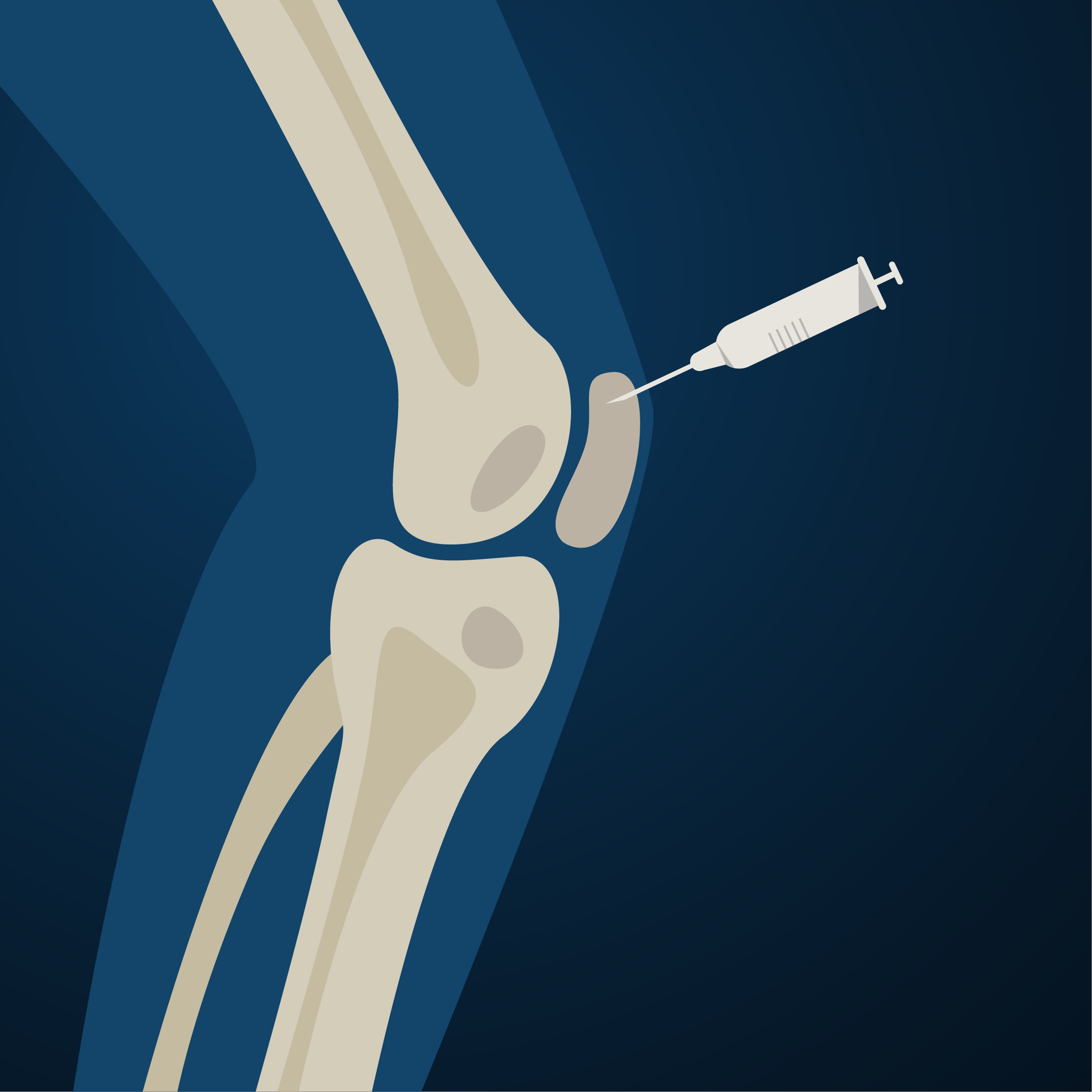
PRP Knee Treatments
Knee Anatomy
The knee joint, one of the most complex and heavily used joints in the human body, consists of bones, cartilage, ligaments, and synovial fluid. The primary bones involved are the femur (thigh bone), tibia (shin bone), and patella (kneecap). These bones meet at the knee joint, which is cushioned by cartilage to ensure smooth movement.
Cartilage in the knee includes the articular cartilage covering the bone ends and the menisci, two C-shaped discs that act as shock absorbers. The ligaments, such as the Anterior Cruciate Ligament (ACL) and the Posterior Cruciate Ligament (PCL), provide crucial stability, preventing excessive movements that could damage the joint. The synovial fluid within the joint capsule lubricates the surfaces, reducing friction during movement.
Platelets, derived from the blood, play a crucial role in the knee’s healing processes. They contain growth factors and proteins essential for tissue repair and regeneration. Platelet-rich plasma (PRP) therapy leverages these components to treat various knee conditions by enhancing the body’s natural healing capabilities, reducing inflammation, and promoting cartilage repair.
Although biologic treatments are still very new, early research is showing benefit for treating a variety of orthopedic conditions.
Injuries
PRP therapy treats various knee injuries and conditions, mainly cartilage and soft tissue damage. Common conditions treated with PRP include:
Osteoarthritis – For the right patient candidates, PRP can help reduce pain and inflammation associated with knee osteoarthritis, providing relief and improving joint function for those with mild to moderate stages of the disease
Meniscal Tears – These injuries to the cartilage acting as shock absorbers in the knee can benefit from PRP, which promotes healing and reduces pain.
Ligament Injuries – Tears or sprains of knee ligaments such as the ACL, PCL, MCL (medial collateral ligament), and LCL (lateral collateral ligament) can be treated with PRP to speed up recovery and improve stability.
Patellar Tendonitis (Jumper’s Knee) – PRP can alleviate inflammation and small tears in the patellar tendon, promoting faster healing and pain relief.
Chondromalacia Patella – PRP can help manage pain and promote cartilage healing under the kneecap.
Other Soft Tissue Injuries – Due to its regenerative properties, PRP therapy can also benefit general inflammation and minor soft tissue injuries around the knee.
PRP Treatment
Platelet-Rich Plasma (PRP) therapy involves collecting a small sample of the patient’s blood, which is then processed in a centrifuge to separate the plasma and platelets from other blood components. The resulting PRP, rich in growth factors, is injected into the affected knee joint. These growth factors help reduce inflammation, stimulate tissue repair, and alleviate symptoms of conditions like arthritis.
PRP therapy is particularly effective for patients with mild to moderate arthritis and other knee conditions that don’t respond well to conventional treatments. Most patients undergo a series of three injections, spaced about a week to a week and a half apart. Numerous studies have supported this protocol, which has been shown to be the most effective for treating knee pain and inflammation.
The potential benefits of PRP therapy may include reduced pain, decreased inflammation, and improved joint function. While it may not eliminate symptoms, it has the potential to significantly enhance the quality of life for many patients, allowing them to engage in activities that were previously too painful.
Recovery
Recovery from PRP therapy is typically straightforward and quicker than surgical interventions. Patients can usually return to their daily activities shortly after the injections, with noticeable improvements often seen within a few weeks. Reducing pain and swelling allows for increased mobility and a return to your active lifestyle.
Patients are advised to follow a rehabilitation program tailored to their specific needs, which may include physical therapy to strengthen the surrounding muscles and improve joint stability. Maintaining a healthy lifestyle, including weight management and regular exercise, which reduces stress on the knee joint, enhances the effectiveness of PRP therapy.
Long-term outcomes of PRP therapy are promising, with many patients experiencing sustained relief from knee pain and improved joint function for several years. As with any medical treatment, individual results may vary, and ongoing research continues to refine these biological therapies, making them an increasingly viable alternative to surgery.
I have been doing biologic treatments for the knee now for over ten years. The more I use it, the more effective I see that it is for the properly selected patients. So I do my best to try to keep the price as low as possible so that more people can afford to do it.
Join Dr. Jones as he walks you through the steps of a Platlet-rich plasma (PRP) therapy:
